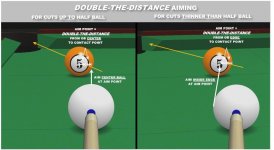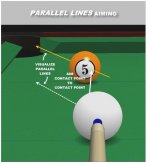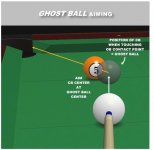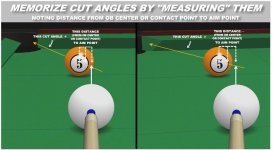In this thread I'll post illustrations of the most common and "geometrically accurate" basic aiming methods for those who may not know them. These methods are simple in concept, but not necessarily easy to use for everybody. I believe they're worth knowing by everybody because of the clear way they illustrate basic aiming principles.
I don't advocate any of these methods over any others, although I recommend them all for educational value. Feel free to take the drawings for your own use.
I don't advocate any of these methods over any others, although I recommend them all for educational value. Feel free to take the drawings for your own use.
Last edited:



